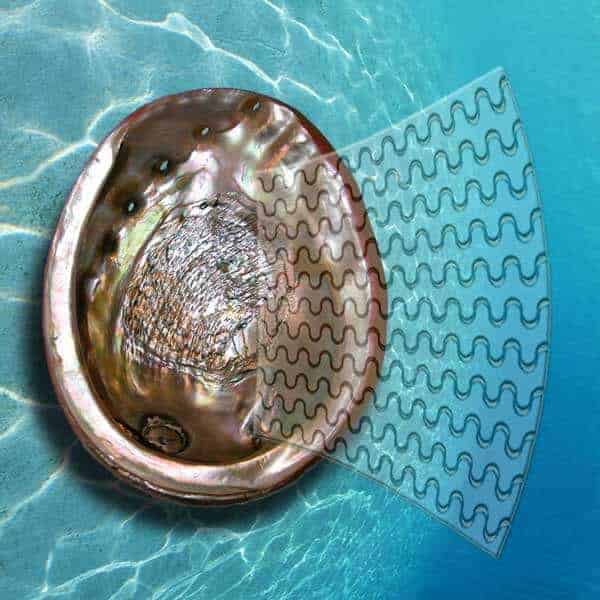Glass of the future may not be the same brittle material we know.
Researchers from McGill University in Montreal have shown how glass can be made tougher when they are engraved with tiny cracks. “We chose to work with glass because we wanted to work with the archetypal brittle material,” said Francois Barthelat, associate professor in McGill’s department of mechanical engineering.
In results published in January in the journal Nature Communications, Barthelat and his colleagues presented their work on durable bio-inspired glass.They took their cue from nature — from highly mineralized, but tough materials such as tooth enamel, mollusk and conch shell, and nacre, the hard, shiny inner surface of shells. The team laser-engraved arrangements of fine cracks into glass slides, making the slides up to 200 times tougher than intact glass.
The engraved glass slides do not resemble teeth or nacre, Barthelat said. Instead, the researchers took the idea of weak interfaces. “It is not about copying directly from nature, but it’s bio-inspired,” he said. “We understand nature enough to take ideas from nature in design.”
Tooth enamel and mollusk shells are more than 95 percent mineral by volume and so would be expected to be fragile. But their structure — instead of being solid, they are composed of microscopic rods or tablets that fit together — allows them to withstand damage. The interfaces between the tiny rods or tablets direct cracks to follow the pattern. Energy from an impact is dissipated through friction among the fine structures and lost as heat, Barthelat said.
With 3-D laser-engraving apparatus, comprising two mirrors and a lens to focus a pulsed laser beam, the team created an arrangement of tiny radial cracks that spread out only over short distances within 2-inch-wide glass slides. These microcracks were a few microns in size and microns apart. (The diameter of a strand of average human hair is about 40–50 microns.) The array of defects boosted the apparent toughness of the glass slides by deflecting an incoming crack up to a 70-degree angle.
With the same technique, the team engraved a weak interface with features resembling the edge of a jigsaw puzzle repeated at length, fitting together like interlocking fingers. The glass slides were analyzed in a machine that tested their strength and toughness. They were found to be 100 times tougher than intact glass. When the researchers filled the space at the interfaces with polyurethane, a polymer resin, the glass slides became 200 times tougher than intact glass.
According to Barthelat, these technologies could be used to make windows, smartphones screens and glassware, and to improve bulletproof glass. The team is also trying them on other materials, such as polymers and ceramics.
The technologies could be applied industrially, he said. “We use lasers and lasers are not exotic equipment. They’re now widely used in glass machining and engraving,” he said. The machines cost less than $100,000. “We can scale up the techniques easily so it’s not expensive. We always try to make these materials using less energy and with no high heat.”
Anne Kietzig, professor of chemical engineering at McGill University, who was not involved in the research, agreed. “(Barthelat’s) study used an industrial setup, not a complex research setup, so it’s not super expensive and it can be relatively easy to translate to industry,” she said.
Some terms have to be cleared up to understand Barthelat’s team’s results. In engineering, there are different definitions of what is “strong.” “Strength could be how much force one needs to apply to deform or break a material, while toughness is how much energy a material can absorb in terms of impact,” Barthelat said. “Here we take glass, and sacrifice some strength and gain toughness.”
This trade-off is an excellent demonstration that it is extremely challenging to increase both toughness and strength, said Katherine Faber, professor in the department of materials science and engineering at Northwestern University. “Although the increases in fracture toughness (resistance to crack propagation) are impressive, the strength (load-bearing capacity) of this glass is considerably reduced. … This reduction is due to the fact that the induced microcracks ultimately serve as the source of failure.”
Still, Barthelat’s team’s work is solid research, Kietzig said. “It’s interesting. It’s exciting, something new in the field and possibly scalable.”
Barthelat said: “Making better materials with fewer resources will pick up in the future. Better performance with less energy required and cheaper to make, that’s our vision for this type of project.”


